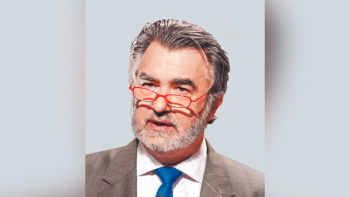
FDA, Industry Move to Finalize New Drug User Fee Programs
Updated programs supporting the development and review of prescription medicines are being readied for approval by federal agencies and ultimately by Congress
Following several months of negotiations involving regulators, industry and patient and consumer advocates, updated programs supporting the development and review of prescription medicines are being readied for approval by federal agencies and ultimately by Congress. The fee programs so critical to FDA operations for regulating drugs and other medical products must be renewed every five years, this time in 2022, and a range of entities need to sign off on various changes and updates to the programs. The negotiators are finalizing “commitment letters” that spell out what industry will pay and what policies and programs FDA will implement with those funds, to be referenced in implementing legislation.
Although it may seem that there’s plenty of time to finalize new user fee packages and to gain legislative approval before the current authority expires in Sept. 2022, there is pressure to move the proposal forward in the next few months to meet this deadline. The discussions involve separate user fee packages for drugs and biologics (PDUFA VII), generic drugs (GDUFA III), and biosimilars (BSUFA III). The legislators usually look to authorize the new fee packages as part of a broader bill enacting a host of projects and requirements for drug regulation, development and marketing, possibly including an updated version of the 21st Century Cures Act with provisions governing clinical research and data disclosure.
FDA kicked off the fee negotiating process for renewing the Prescription Drug User Fee Act (PDUFA VII) at a public meeting in July 2020. Negotiations have involved subgroups for manufacturing and inspections, digital health and informatics, finance, regulatory decision tools, and pre- and post-market review.1 A main topic has been the need to increase fee revenues allotted to the Center for Biologics Evaluation and Research (CBER) to provide additional support and resources to oversee a fast-expanding volume of applications for cell and gene therapies, including expedited development of regenerative medicine therapies. And industry continues to press FDA for progress in hiring and retention of a “world-class technical and scientific staff.”
PDUFA agreements direct the Center for Drug Evaluation and Research (CDER) to utilize fee revenues to streamline and manage multiple meetings with sponsors and to advance rare disease therapies and use of real-world evidence, model-informed drug development, and complex clinical trial designs. A new program may test broader use of “splitreal-time” review of certain innovative drugs.
The program also will continue support for innovative manufacturing technologies and efforts to address more clearly CMC (chemistry, manufacturing and controls) issues during development. There is agreement on enhancing oversight of postmarket drug safety and Risk Evaluation and Mitigation Strategies, and to utilize more broadly analytics from FDA’s Sentinel Initiative. An important goal is to further implement digital health technologies and bioinformation to streamline drug development and review.
All these initiatives will continue to boost industry fees. Drug application fees are slated to reach $4 million over the five years of the program ending in 2027, up from nearly $3 million today. This increase reflects the steady rise in the portion of FDA operations funded by industry user fees, which now account for about half of the agency’s budget for regulating drugs and biologics. While some observers complain that this arrangement gives industry too much influence over FDA decisions, Congress seems fairly content with the financial arrangement. And FDA officials maintain that increased reliance on fee revenues does not sway approval decisions.
Fees for generics, biosimilars, OTCs
Negotiations also are winding up for reauthorization of the Generic Drug User Fee Amendments (GDUFA III), which also was launched at a July 2020 public meeting. After making notable changes in fee categories and rates in 2017 revisions, current discussions have focused on plant inspection processes, drug master file use, application review goal dates, and enhancements to the inactive ingredient database.2 Main innovations aim to facilitate the review of complex generics, of the continued rise in supplements seeking post-approval changes, and for controlled correspondence. These and other changes aim to achieve more application approvals in the first review cycle, possibly by assessing facility status earlier in the review process.
Similarly, FDA is considering revisions to the Biosimilar User Fee Act (BsUFA III) to further streamline the approval process and facilitate patient access to less costly biotech therapies. That discussion began with a public meeting in November 2020, where FDA officials presented their goals for updating the program, acknowledging the need for additional guidance on interchangeable biosimilars.3 FDA seeks to better manage meetings with sponsors, who want advisory sessions to begin earlier in product development. Manufacturers emphasized the importance of building a capable staff to manage this program, along with upgrading information technology supporting BsUFA. Consumer advocates would like FDA to address how reimbursement and misinformation stymies biosimilar marketing, but that may lie outside the user fee agreement.
And, separately, FDA is launching its new user fee program for over-the-counter drugs, after agreeing to drop levies on manufacturers that jumped in to produce hand sanitizer to combat the spread of COVID-19. FDA included fees for such firms in its December 2020 publication of policies governing the new OTC monograph drug user fee program (OMFUA), which was authorized by Congress in March 2020 as part of broader pandemic legislation. But an outcry from firms such as liquor distillers forced FDA to drop the fees for companies that only produce hand sanitizer in response to the public health emergency. A new fee schedule was published March 26, 2021 with revised fees for facilities and for OTC products for the current year.4
References
https://www.fda.gov/industry/prescription-drug-user-fee-amendments/pdufa-vii-fiscal-years-2023-2027 https://www.fda.gov/drugs/development-approval-process-drugs/gdufa-iii-reauthorization-negotiation-sessions?utm_medium=email&utm_source=govdelivery https://www.fda.gov/industry/biosimilar-user-fee-amendments/public-meeting-reauthorization-biosimilar-user-fee-act-bsufa-11192020-11192020 https://www.fda.gov/news-events/fda-brief/fda-brief-fda-republishing-fee-rates-under-over-counter-monograph-drug-user-fee-program
Newsletter
Stay current in clinical research with Applied Clinical Trials, providing expert insights, regulatory updates, and practical strategies for successful clinical trial design and execution.






.png)



.png)



.png)
.png)
